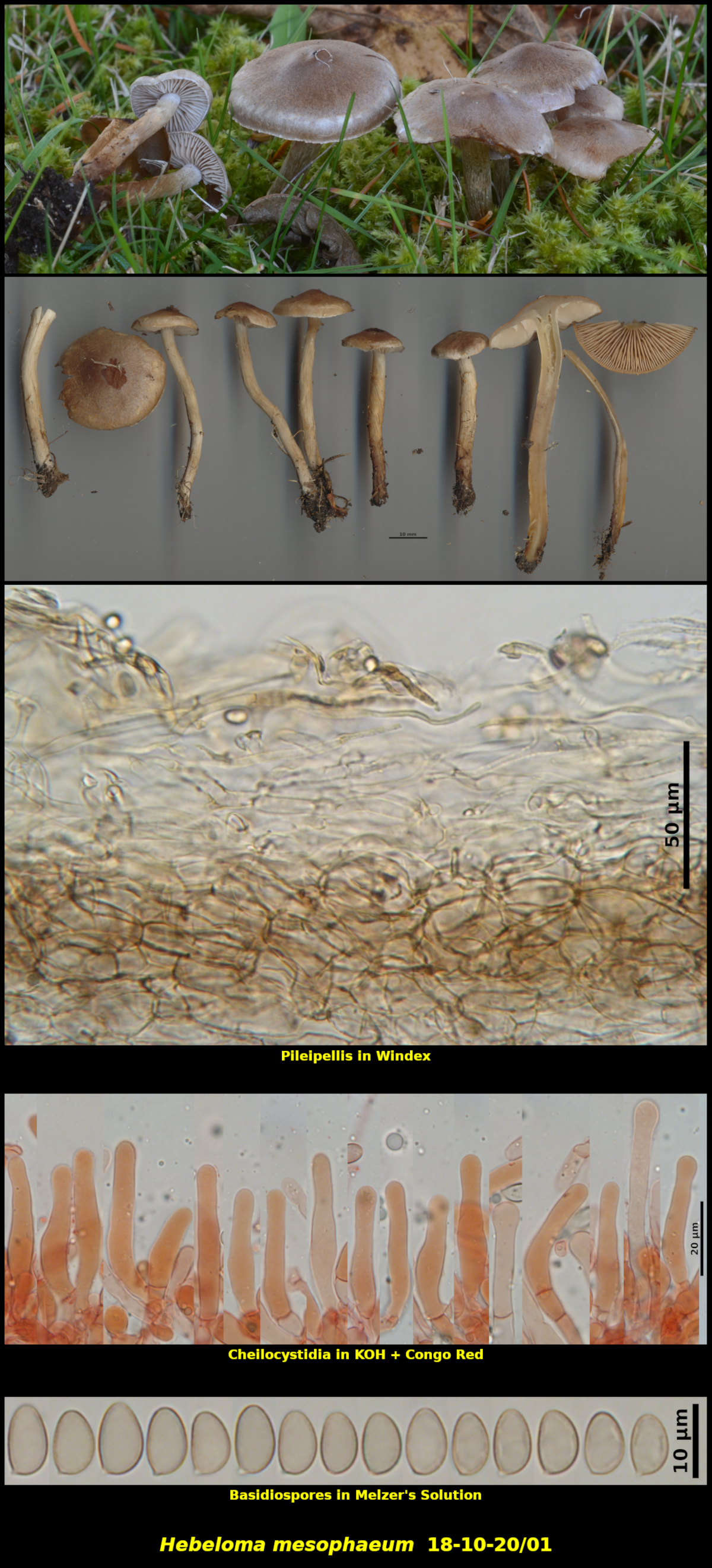Fleshy Fungi of New Brunswick >>
Hebeloma mesophaeum
Hebeloma mesophaeum Pers.) Quél.

Gregarious in lawn, associated equally with Betula cordifolia and Abies balsamea, Little Lepreau, New Brunswick (18-10-20/01).
Pileus convex at first, expanding to more broadly so at maturity, with a low broad umbo, moist, glabrous except for some white remnant of the universal veil at the margin, reddish brown (HSV350:50:30-40) at first, but later becoming more pinkish buff (HSV30:10-15:90) with reddish colour remaining on the umbo, 18-33 mm in diameter. Stipe equal, not enlarged at the base, pale straw coloured (HSV45:02-04:100), dry, pruinose at the apex and glabrous to fibrillose elsewhere, 43-52 x 3-6 mm. Lamellae white, close, adnexed, slightly fimbriate with cheilocystidia at the margin, not marginate. Cortina lacking. Flesh concolorous with the surface tissue in the pileus and stipe, lacking a distinctive odour and taste.
Basidiospores dull orange brown (HSV25:40-50:80) in spore print, amygdaliform, very finely roughened but appearing almost smooth at magnifications lower than 100x, not dextrinoid, 8.0-10.1 x 5.0-6.2 µm, Q = 1.54-1.78 (average[57]: 8.9 x 5.4 µm, Q = 1.66). Cheilocystidia forming a continuous fibriate margin, cylindrical to narrowly ventricose, often slightly swollen below, rarely sublageniform, thin-walled, with a basal clamp connection, 28-63 x 5.0-8.7 µm. Pleurocystidia lacking. Basidia clavate, 4-spored, with a basal clamp connection. Pileipellis an ixocutis of narrow encrusted hyphae, with a subpellis of short broad brown cells. Clamp connections present on almost all septa.
A small species of Hebeloma recognized by its light brown pileus, lack of a cortina and flesh lacking a distinctive odour. It is common on lawns where there are birches nearby. Microscopically it is characterized by its almond-shaped non-dextrinoid basidiospores that are only very inconspicuously roughened..
Photo: D. Malloch (18-10-20/01).